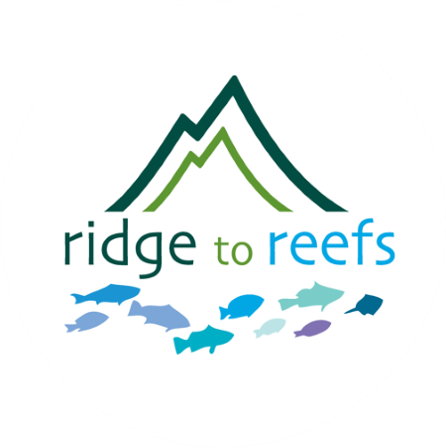Protecting Reefs Through Erosion Control: Watershed Restoration Planning
Prioritize
Activity 1 - Meeting with 2020 Kuahiwi a Kai: Lāna'i Watershed Conservation grantees to discuss scientific findings to identify priority areas and activities for restoration efforts on Lāna'i.
Methods: Ridge to Reefs will coordinate meetings with groups from Pulama Lāna'i and the community of Lāna'i, including 2020 grantees of the Kuahiwi a Kai: Lāna'i Watershed Conservation program to advance scientific understanding of the island’s conservation needs.
This meeting will inform priority areas and methods for sediment control activities, and coordinate efforts to implement restoration measures that align with community goals, scientific findings and existing programs.
Outcomes: An improved understanding of the processes by which ecosystem degradation is occurring and of the status of watershed health across the island. Strategic prioritization of restoration sites and activities ensuring the greatest environmental and social impact.
Science-based planning
Activity 2 - Creation of site-specific plans and restoration strategies.
Ridge to Reefs will coordinate with other scientific organizations working on the island including Pulama Lāna'i, USGS, University of Hawaii, and The Nature Conservancy to interpret mapping and perform field work to develop site-specific restoration activities and cost estimates for priority areas.
Methods: The team will evaluate GIS and LIDAR information to determine critical locations for interventions to reduce sediment transport; remove invasive plant species; and evaluate opportunities for the creation of biochar for soil treatments (as the existing soils have lost their topsoil due to invasive species and ungulates).
Outcomes: List of prioritized restoration projects to reduce sediment transport (Fig. 1) within the Northeast Lāna'i watersheds with associated materials, costs and benefits.
Identified key stressors and technical solutions to address these challenges using applied engineering and green infrastructure solutions.
Early Action Projects
Activity 3 - Implementation of early action projects to promote soil stabilization in high-priority areas.
Methods: At least two early implementation actions will be pursued including: 1) the project team will coordinate with experts from USGS and other organizations on stabilizing airfall deposits within the watershed — the methods would include using biochar, as well as mycorrhizal and microbial amendments to condition the degraded soils. Degraded soils tend to have very little organic matter and low pH.
Re-planting these areas with native vegetation and using vegetative strategies to trap sediment before it reaches the coastal environment.
Outcomes: Advancement of methods to stabilize airfall deposits including soil amendment methods and appropriate vegetative strategies in coordination with USGS Pacific Islands Ecosystems Research Center (PIERC) and other scientists.
Defined methods to sequester soil within the terrestrial coastal deposit areas to immediately reduce sediment transport into the marine and coral reef environment. Sequester at least 10 -15 tons of sediment annually.
Youth Engagement
Activity 4 - Engage youth in Lāna'i in conservation education and restoration implementation activities.
Methods: Ridge to Reefs will explore partnerships with programs like the Pacific Internship Programs for Exploring Science (PIPES) program at University of Hawaii or create an internship through Ridge to Reefs’ fellowship program to engage youth and young adults in planning and implementation activities.
Outcomes: Opportunities for youth to become engaged in conservation work, resulting in hands-on education and employable skills. The team anticipates engaging at least 5-10 youth and young adults in restoration implementation and/or planning, and providing internship opportunities for at least two individuals.




